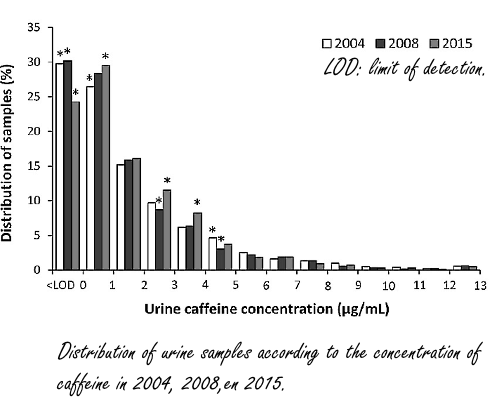Below is a superb study on caffeine use in sport at the elite level, so generally athletes younger than oursleves, under 35. This study is a view since WADA removed caffeine from the controls list way back in 2004. The figures quoted below for “allowed” are huge and of course we as masters athletes need to pay special attention to things that may have side effects so of course the information below is purely for reflection.
Since WADA removed caffeine from its doping list way back in 2004, the moderate use of the everyday stimulant among Olympic athletes has increased incredibly. This is the overall conclusion devised from the Spanish researchers. The use of caffeine is particularly popular among cyclists, rowers and triathletes (endurance sports).
Caffeine & the doping list
In 2004, WADA removed caffeine from the doping list. There were no indications at that time, when used in moderate amounts, caffeine was dangerous – and caffeine is present in many every day foods as we all know and love the use if coffee.
However, doping hunters still monitor the concentration of caffeine in urine samples from athletes. They want to be on the alert for the excessive abuse of caffeine. If this should occur of course, they can intervene and put the stimulant back on the list. So far, they have not yet found any indications that athletes are abusing caffeine.
Study
In 2004, 2008 and 2015, the Spaniards determined the concentration of caffeine in urine samples of 2788, 2543 and 2157 Olympic athletes respectively. The samples were taken at officials events in Spain.
Results
The average concentration of caffeine in the athletes’ urine had increased significantly after 2004, but this increase was modest.
The figure below indicates that the increase in caffeine concentration within urine was only higher significantly among athletes with a few micrograms of caffeine in their urine. When caffeine was still on the doping list, a doping violation occurred if an athlete had more than 12 micrograms of caffeine in a milliliter of urine. However, athletes were able to use caffeine in effective doses without passing through that 12 microgram limit.
Some figures: if an average athlete consumes 9 milligrams of caffeine per kilogram of body weight (if you weigh 80 kilograms, that amounts to 720 milligrams or 5 cups of coffee), the athletes in question probably has 6 micrograms of caffeine in a milliliter of urine. Still below 12 micrograms/milliliter.
As you can see below, there was no significant increase in the number of athletes with more than 6 micrograms in the urine.
According to the study of the Spaniards, caffeine is especially popular with endurance athletes. They found the highest concentrations among cyclists, triathletes and rowers.
Conclusion
“These data indicate that the use of caffeine has slightly increased since its removal from the list of banned substances, but urine caffeine concentrations suggest that the use of caffeine is moderate in most sport specialties”, write the researchers.
Source:
Nutrients. 2019 Jan 29;11(2).






